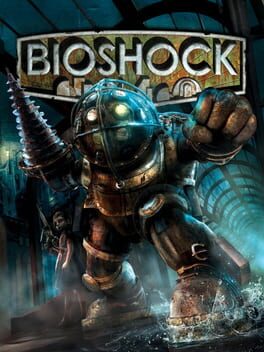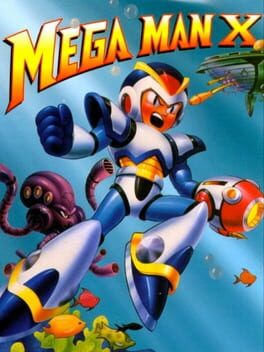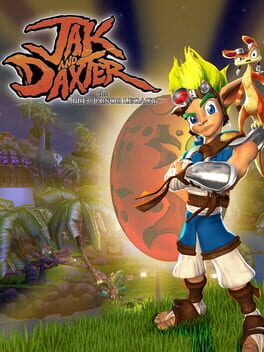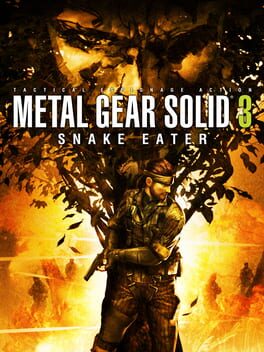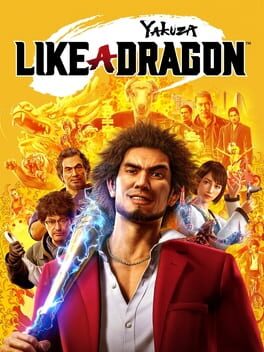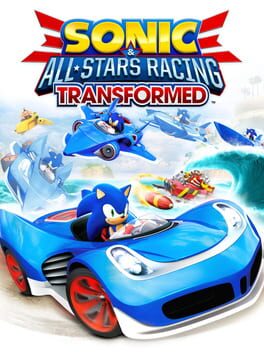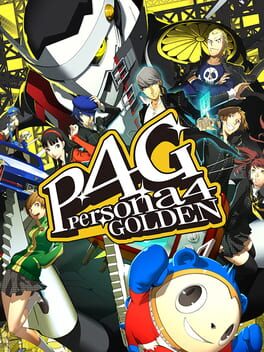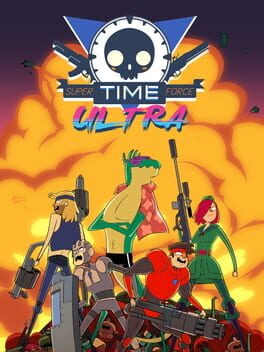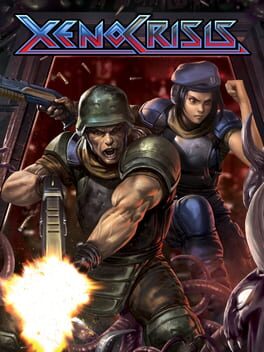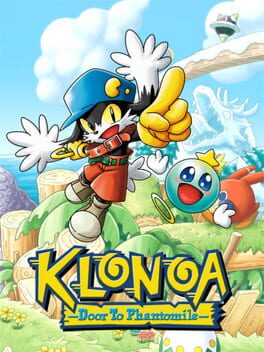inferno60x
Bio
Lawyer by day, Gamer by night. Platinum Trophy chasing and virtual photo taking.
Lawyer by day, Gamer by night. Platinum Trophy chasing and virtual photo taking.
Badges

Popular
Gained 15+ followers

Roadtrip
Voted for at least 3 features on the roadmap

GOTY '23
Participated in the 2023 Game of the Year Event

Loved
Gained 100+ total review likes

1 Years of Service
Being part of the Backloggd community for 1 year

Donor
Liked 50+ reviews / lists

Best Friends
Become mutual friends with at least 3 others

Noticed
Gained 3+ followers

Pinged
Mentioned by another user

Liked
Gained 10+ total review likes

GOTY '22
Participated in the 2022 Game of the Year Event

Gamer
Played 250+ games

N00b
Played 100+ games
Favorite Games
356
Total Games Played
028
Played in 2024
151
Games Backloggd
Recently Played See More
Recently Reviewed See More
Super Time Force Ultra, an updated version of the original Super Time Force, is a side-scrolling action shooter developed by Capybara Games. With the original game releasing for the Xbox One and Xbox 360 in May 2014, the updated Super Time Force Ultra was released in September 2015 for the PlayStation 4 and PlayStation Vita. With a vibrant pixelated art style, wacky time travel shenanigans, and a unique time-bending mechanic baked in, the game has a lot going for it that made it an indie classic upon release. After playing the game, however, its moments of chaotic strategic fun and humorous storytelling efforts are overshadowed by repetitive level design, unbalanced difficulty, and a challenging gameplay loop that holds it back in my opinion.
While I’d usually start a review with an overview of the story, there isn’t much to go on here. It essentially boils down to this - you take control of the members of the Super Time Force, a time-traveling military organization, sent to various points in history by Comander Repeatski to stop a near-endless robot army from destroying the world. Again, it’s not a lot of story, but not every game needs to have an overblown dramatic narrative. Regardless of its brevity, however, the story that does exist is told through fantastic pixel art cinematics and dialogue that genuinely had me laughing at parts. It’s fun, short, and just enough to get the game underway.
Much like the story, the core gameplay is easy enough to understand as a side-scrolling shooter title. With obvious inspirations from the Metal Slug and Contra franchises, the player controls one of sixteen characters as they run and gun their way to the end of the level. With each character having their own unique ability and weapon, it gives the game quite a bit of depth and strategic variance on how any level can be tackled (even if several of these characters aren’t unlocked until well into the game’s runtime). Super Time Force Ultra, however, has one other mechanic it’s known for that makes this more than a simple run-and-gun shooter - the “Time Out” mechanic. This gameplay feature makes good use of the word “Time” in Super Time Force by allowing the player to rewind to a point before their death, pick a new character, and then resume playing alongside a ghost version of their original character. The absurdity of these time shenanigans and the multitude of ghost characters that can exist at one time creates a hilarious dance of past-selves, each blasting away at enemies in a glorious symphony of gunfire. This time bending ability opens up creative strategies, like sacrificing earlier versions to revive fallen comrades or setting up elaborate kill zones in difficult levels, and is undeniably cool. Unfortunately, the mechanic can quickly become confusing and overwhelming, where the game devolves into button mashing as enemy swarms and you constantly attempt to revive yourself and try again. I can’t say I disliked the mechanic overall and thought the idea was great, it just could have been executed better and eventually became far too much for me to handle, especially on the PlayStation’s Vita screen.
With an interesting time travel storyline and the Time Out mechanic, one would assume the level design and missions would follow suit. This is unfortunately not the case. The levels, while visually distinct in their textures and backgrounds, suffer from repetition in their execution usually consisting of a copy and paste of the same layout. Mission objectives rarely deviate from "blast everything" instead of taking advantage of the interesting mechanics that the game introduces. Compound this with a short campaign and less-than-stellar enemy variety, and Super Time Force didn’t leave a very lasting impression. While there are challenge modes to extend playtime, I’m not that dedicated to mastering game mechanics that genuinely give me a headache.
Super Time Force Ultra has potential, but its confusing game mechanics, repetitive levels, and short runtime prevent it from reaching its full potential. If you're looking for a quick burst of chaotic fun with a unique time mechanic, it might be worth giving it a shot. Just don't expect a timeless classic.
While I’d usually start a review with an overview of the story, there isn’t much to go on here. It essentially boils down to this - you take control of the members of the Super Time Force, a time-traveling military organization, sent to various points in history by Comander Repeatski to stop a near-endless robot army from destroying the world. Again, it’s not a lot of story, but not every game needs to have an overblown dramatic narrative. Regardless of its brevity, however, the story that does exist is told through fantastic pixel art cinematics and dialogue that genuinely had me laughing at parts. It’s fun, short, and just enough to get the game underway.
Much like the story, the core gameplay is easy enough to understand as a side-scrolling shooter title. With obvious inspirations from the Metal Slug and Contra franchises, the player controls one of sixteen characters as they run and gun their way to the end of the level. With each character having their own unique ability and weapon, it gives the game quite a bit of depth and strategic variance on how any level can be tackled (even if several of these characters aren’t unlocked until well into the game’s runtime). Super Time Force Ultra, however, has one other mechanic it’s known for that makes this more than a simple run-and-gun shooter - the “Time Out” mechanic. This gameplay feature makes good use of the word “Time” in Super Time Force by allowing the player to rewind to a point before their death, pick a new character, and then resume playing alongside a ghost version of their original character. The absurdity of these time shenanigans and the multitude of ghost characters that can exist at one time creates a hilarious dance of past-selves, each blasting away at enemies in a glorious symphony of gunfire. This time bending ability opens up creative strategies, like sacrificing earlier versions to revive fallen comrades or setting up elaborate kill zones in difficult levels, and is undeniably cool. Unfortunately, the mechanic can quickly become confusing and overwhelming, where the game devolves into button mashing as enemy swarms and you constantly attempt to revive yourself and try again. I can’t say I disliked the mechanic overall and thought the idea was great, it just could have been executed better and eventually became far too much for me to handle, especially on the PlayStation’s Vita screen.
With an interesting time travel storyline and the Time Out mechanic, one would assume the level design and missions would follow suit. This is unfortunately not the case. The levels, while visually distinct in their textures and backgrounds, suffer from repetition in their execution usually consisting of a copy and paste of the same layout. Mission objectives rarely deviate from "blast everything" instead of taking advantage of the interesting mechanics that the game introduces. Compound this with a short campaign and less-than-stellar enemy variety, and Super Time Force didn’t leave a very lasting impression. While there are challenge modes to extend playtime, I’m not that dedicated to mastering game mechanics that genuinely give me a headache.
Super Time Force Ultra has potential, but its confusing game mechanics, repetitive levels, and short runtime prevent it from reaching its full potential. If you're looking for a quick burst of chaotic fun with a unique time mechanic, it might be worth giving it a shot. Just don't expect a timeless classic.
Xeno Crisis is a 2019 multi-directional arena shooter developed and published by Bitmap Bureau. Created as a love letter to classic arcade shoot-’em-ups like Robotron: 2084, Xeno Crisi released for a litany of systems including the Sega Genesis, Nintendo Switch, GameCube, Nintendo 64, PlayStation 4, and (most importantly for this review) the PlayStation Vita. In short, Xeno Crisis is an nightmare-infested bullet-hell that offers a satisfying nostalgic shooter experience with outstanding pixelated visuals and an impressive soundtrack but falls short due to its length and crushing difficulty.
Like most video games from the same genre and time period that Xeno Crisis pulls inspiration from, the story here is sparse. The entire plot centers around a distress signal from the scientific research facility Outpost 88 which has been overrun by some sort of outside invaders. After receiving this distress signal, Commander Darius tasks two space marines, John Marsh and Sarah Ridley, with eradicating the threat and rescuing any survivors. After choosing whether to take on the mission as a one-man killing machine or in tandem with a second player, your marine of choice is airdropped into the first level of the invasion and has to fight for their life.
To survive, the player must guide their marine in and out of enemy-invested rooms, clearing each one of the invaders and saving survivors along the way. While initially equipped with only a standard rifle, a limited supply of grenades, and a close-range melee attack, the player will soon discover a wide array of weaponry scattered throughout each level to utilize - i.e. flamethrowers, homing missiles, lasers, shotguns, etc. Unfortunately, these scavenged weapons are only usable for a short amount of time, but their firepower more than makes up for it. When every room has been cleared, a door to the level boss opens and the ultimate challenge begins. The six bosses in the game each have their own disgusting designs, inspirations, and mechanics that make them fun to destroy and best in combat. Their designs, however, all look to be just pixelated versions of demons from Doom or a straight one-to-one copy of a Lovecraftian monster. It’s not a bad thing, per se, and the pixel work is still outstanding, it’s just a tad disappointing.
The gameplay loop of Xeno Crisis - entering a room, killing anything that moves, grabbing whatever power-ups, ammo, and health you can find, and dashing to the next room to do it all again - is incredibly addicting. This, along with the game’s soundtrack, is what makes it a fantastic game to have on a handheld and why I can’t delete it off my Vita. Rolling credits on the game, however, is no easy task. Xeno Crisis is crushingly difficult, even on the easiest setting. There are of course options to upgrade your character after each successful level, but these incremental health increases or weapon upgrades don’t do much to curve the ever-increasing difficulty. Furthermore, the twin-stick controls the game employs - left joystick controlling character movement, right joystick controlling the direction of weapon fire - is less than ideal on the PlayStation Vita. On a legitimate controller with two full-size joysticks, I’m sure the twin-stick controls and the demanding precision and speed required to survive in Xeno Crisis are far easier than on the tiny nubs available on the Vita. And while the Vita’s joysticks are serviceable and worth putting up with to have this game available on the go, it might leave you with a hand cramp or two.
Overall, Xeno Crisis on the PlayStation Vita is a fantastic port for fans of old-school arcade shooters and those seeking a challenge. While the difficulty and short length do put a damper on the overall experience, it doesn’t take away from the sheer enjoyment of blasting wave after wave of enemies with an ever-increasing arsenal of weaponry. I can say with certainty that I will never go back and put myself through the hell of finishing Xeno Crisis, but I also can’t bring myself to delete the game. It’s an impressively fun pick-up-and-play shooter that functions as a fantastic time-waster where the player can cut their brain off and just pull the trigger until their chosen Marine or the invaders are dead.
In short, if you crave intense twin-stick action on the go and have the reflexes to match, Xeno Crisis offers a rewarding, nostalgic trip down memory lane that deserves its spot in your Vita’s library.
Like most video games from the same genre and time period that Xeno Crisis pulls inspiration from, the story here is sparse. The entire plot centers around a distress signal from the scientific research facility Outpost 88 which has been overrun by some sort of outside invaders. After receiving this distress signal, Commander Darius tasks two space marines, John Marsh and Sarah Ridley, with eradicating the threat and rescuing any survivors. After choosing whether to take on the mission as a one-man killing machine or in tandem with a second player, your marine of choice is airdropped into the first level of the invasion and has to fight for their life.
To survive, the player must guide their marine in and out of enemy-invested rooms, clearing each one of the invaders and saving survivors along the way. While initially equipped with only a standard rifle, a limited supply of grenades, and a close-range melee attack, the player will soon discover a wide array of weaponry scattered throughout each level to utilize - i.e. flamethrowers, homing missiles, lasers, shotguns, etc. Unfortunately, these scavenged weapons are only usable for a short amount of time, but their firepower more than makes up for it. When every room has been cleared, a door to the level boss opens and the ultimate challenge begins. The six bosses in the game each have their own disgusting designs, inspirations, and mechanics that make them fun to destroy and best in combat. Their designs, however, all look to be just pixelated versions of demons from Doom or a straight one-to-one copy of a Lovecraftian monster. It’s not a bad thing, per se, and the pixel work is still outstanding, it’s just a tad disappointing.
The gameplay loop of Xeno Crisis - entering a room, killing anything that moves, grabbing whatever power-ups, ammo, and health you can find, and dashing to the next room to do it all again - is incredibly addicting. This, along with the game’s soundtrack, is what makes it a fantastic game to have on a handheld and why I can’t delete it off my Vita. Rolling credits on the game, however, is no easy task. Xeno Crisis is crushingly difficult, even on the easiest setting. There are of course options to upgrade your character after each successful level, but these incremental health increases or weapon upgrades don’t do much to curve the ever-increasing difficulty. Furthermore, the twin-stick controls the game employs - left joystick controlling character movement, right joystick controlling the direction of weapon fire - is less than ideal on the PlayStation Vita. On a legitimate controller with two full-size joysticks, I’m sure the twin-stick controls and the demanding precision and speed required to survive in Xeno Crisis are far easier than on the tiny nubs available on the Vita. And while the Vita’s joysticks are serviceable and worth putting up with to have this game available on the go, it might leave you with a hand cramp or two.
Overall, Xeno Crisis on the PlayStation Vita is a fantastic port for fans of old-school arcade shooters and those seeking a challenge. While the difficulty and short length do put a damper on the overall experience, it doesn’t take away from the sheer enjoyment of blasting wave after wave of enemies with an ever-increasing arsenal of weaponry. I can say with certainty that I will never go back and put myself through the hell of finishing Xeno Crisis, but I also can’t bring myself to delete the game. It’s an impressively fun pick-up-and-play shooter that functions as a fantastic time-waster where the player can cut their brain off and just pull the trigger until their chosen Marine or the invaders are dead.
In short, if you crave intense twin-stick action on the go and have the reflexes to match, Xeno Crisis offers a rewarding, nostalgic trip down memory lane that deserves its spot in your Vita’s library.
DISCLAIMER I have no nostalgic attachment to the 1997 PlayStation 1 original Klonoa: Door to Phantomile. In actuality, I only picked up the 2022 remaster because the physical edition was on sale and I wanted it for my collection. It should be apparent then that my initial feelings of this game were untainted by nostalgia for the original or honest interest in the remaster. Therefore, I can say with a clear conscience and no ill will that this game is incredibly mediocre.
Klonoa: Door to Phantomile is 2.5D platformer developed by Namco and originally released on the PlayStation 1 in 1997. Directed by Hideo Yoshizawa, known for his work on the original Ninja Gaiden trilogy for the Nintendo Entertainment System, the game was originally planned to be an adaptation of the manga Spriggan with a plot centered around the Cold War and ancient artifacts of immense power. After licensing arrangements for Spriggan fell through, however, the original ideas were scrapped for a dreams motif and a more comical story. Upon release, Klonoa was met with near-universal praise but would never gain real traction in Western markets. Despite the poor sales numbers, the game would spawn a series of sequels, a 2008 remake released for the Nintendo Wii, and a 2022 high-definition remaster which is the subject of this review. With that said, in contradiction to the praise given to the original and the generally favorable reviews of the remaster, I believe the 1997 release fails to live up to other platformers released alongside it like Super Mario 64, Crash Bandicoot 2: Cortex Strikes Back, and Mega Man X4 and the remaster pales in comparison to other recently released classic compilations like Crash Bandicoot N. Sane Trilogy, Super Mario 3D All-Stars, or the Mega Man and Mega Man X Legacy Collections.
As for the story, players are whisked away to Phantomile, a dreamworld of floating islands and cutesy enemies in danger of becoming a land of nightmares thanks to Ghadius and his trusty sidekick Joka. The player takes control of Klonoa and his trusty Wind Ring to save Phantomile and defeat Ghadius. This paper-thin plot is relayed to the player via cutscenes full of nonsensical gibberish with translated textboxes of dialogue. While the overall narrative is par for the course when compared to other platformers of the era, it doesn’t leave a very lasting impression even when considering the plot twist ending. Maybe playing the 2022 remaster without experiencing the 1997 original was a mistake or I simply expect more out of games today than I would have in the era of PlayStation 1, but I just can’t see the appeal of Klonoa’s cutscenes or story, and found my self fast-forwarding through most of it.
The player must guide Klonoa through six different worlds and over twelve levels of platforming and light puzzle-solving to save Phantomile. In total these levels are a mixed bag and their designs range from uninspired to boring. Some are breezy jaunts through vibrant forest landscapes or forgotten ruins, while others are labyrinthine messes of color, trial-and-error platforming, and backtracking puzzles. Enemy placement throughout can sometimes feel arbitrary or downright devilish, and there's a distinct lack of the inventive level design that made contemporary platformers like Super Mario 64 or Crash Bandicoot 2 so memorable. The moment-to-moment gameplay to get through these levels doesn’t help things either. Grabbing enemies with the use of the Wind Ring’s Wind Bullet to use them as projectiles, platforms, or perform a double jump is a neat gimmick, but compared to the genre-defining freedom of Super Mario 64, the fast-paced gameplay of Crash Bandicoot 2, the subversive oddness of Abe’s Oddysee, or the action-packed Mega Man X4, Klonoa feels basic.
With less-than-stellar gameplay and what I’d consider boring level design, the 2022 remake has little else going for it. There are of course updated visuals and smoother framerates, but that's about it. There's no new content, no gameplay tweaks, not even a hint of effort to modernize the experience. Compared to well-crafted collections like the Mega Man/Mega Man X Legacy Collections and the glorious Super Mario 3D All-Stars, Klonoa's remake feels like an afterthought. A selection of concept art or a music player would have been at least something to make this compilation feel more like a celebration of the franchise rather than a quick cash grab.
Overall, Klonoa: Door to Phantomile isn't a bad game and the remake is well put together, but in the company of its 1997 contemporaries and the plethora of better retro game compilations out today, it is forgettable. The charming visuals and unique ring mechanic can't overcome the bland level design, repetitive gameplay, and uninspired remake treatment. If you're looking for a platforming fix, there are countless titles, both retro and modern, that offer far more excitement and innovation. Klonoa might have a wisp of charm, but it's not enough to save it from being lost in the vast library of platforming excellence.
Unless you're a die-hard Klonoa fan or a completionist ticking off every obscure 90s platformer, Klonoa: Door to Phantomile is a game best left unopened. It's a decent reminder of a simpler time, but one that's ultimately surpassed by the platforming giants that were released alongside it.
Klonoa: Door to Phantomile is 2.5D platformer developed by Namco and originally released on the PlayStation 1 in 1997. Directed by Hideo Yoshizawa, known for his work on the original Ninja Gaiden trilogy for the Nintendo Entertainment System, the game was originally planned to be an adaptation of the manga Spriggan with a plot centered around the Cold War and ancient artifacts of immense power. After licensing arrangements for Spriggan fell through, however, the original ideas were scrapped for a dreams motif and a more comical story. Upon release, Klonoa was met with near-universal praise but would never gain real traction in Western markets. Despite the poor sales numbers, the game would spawn a series of sequels, a 2008 remake released for the Nintendo Wii, and a 2022 high-definition remaster which is the subject of this review. With that said, in contradiction to the praise given to the original and the generally favorable reviews of the remaster, I believe the 1997 release fails to live up to other platformers released alongside it like Super Mario 64, Crash Bandicoot 2: Cortex Strikes Back, and Mega Man X4 and the remaster pales in comparison to other recently released classic compilations like Crash Bandicoot N. Sane Trilogy, Super Mario 3D All-Stars, or the Mega Man and Mega Man X Legacy Collections.
As for the story, players are whisked away to Phantomile, a dreamworld of floating islands and cutesy enemies in danger of becoming a land of nightmares thanks to Ghadius and his trusty sidekick Joka. The player takes control of Klonoa and his trusty Wind Ring to save Phantomile and defeat Ghadius. This paper-thin plot is relayed to the player via cutscenes full of nonsensical gibberish with translated textboxes of dialogue. While the overall narrative is par for the course when compared to other platformers of the era, it doesn’t leave a very lasting impression even when considering the plot twist ending. Maybe playing the 2022 remaster without experiencing the 1997 original was a mistake or I simply expect more out of games today than I would have in the era of PlayStation 1, but I just can’t see the appeal of Klonoa’s cutscenes or story, and found my self fast-forwarding through most of it.
The player must guide Klonoa through six different worlds and over twelve levels of platforming and light puzzle-solving to save Phantomile. In total these levels are a mixed bag and their designs range from uninspired to boring. Some are breezy jaunts through vibrant forest landscapes or forgotten ruins, while others are labyrinthine messes of color, trial-and-error platforming, and backtracking puzzles. Enemy placement throughout can sometimes feel arbitrary or downright devilish, and there's a distinct lack of the inventive level design that made contemporary platformers like Super Mario 64 or Crash Bandicoot 2 so memorable. The moment-to-moment gameplay to get through these levels doesn’t help things either. Grabbing enemies with the use of the Wind Ring’s Wind Bullet to use them as projectiles, platforms, or perform a double jump is a neat gimmick, but compared to the genre-defining freedom of Super Mario 64, the fast-paced gameplay of Crash Bandicoot 2, the subversive oddness of Abe’s Oddysee, or the action-packed Mega Man X4, Klonoa feels basic.
With less-than-stellar gameplay and what I’d consider boring level design, the 2022 remake has little else going for it. There are of course updated visuals and smoother framerates, but that's about it. There's no new content, no gameplay tweaks, not even a hint of effort to modernize the experience. Compared to well-crafted collections like the Mega Man/Mega Man X Legacy Collections and the glorious Super Mario 3D All-Stars, Klonoa's remake feels like an afterthought. A selection of concept art or a music player would have been at least something to make this compilation feel more like a celebration of the franchise rather than a quick cash grab.
Overall, Klonoa: Door to Phantomile isn't a bad game and the remake is well put together, but in the company of its 1997 contemporaries and the plethora of better retro game compilations out today, it is forgettable. The charming visuals and unique ring mechanic can't overcome the bland level design, repetitive gameplay, and uninspired remake treatment. If you're looking for a platforming fix, there are countless titles, both retro and modern, that offer far more excitement and innovation. Klonoa might have a wisp of charm, but it's not enough to save it from being lost in the vast library of platforming excellence.
Unless you're a die-hard Klonoa fan or a completionist ticking off every obscure 90s platformer, Klonoa: Door to Phantomile is a game best left unopened. It's a decent reminder of a simpler time, but one that's ultimately surpassed by the platforming giants that were released alongside it.
